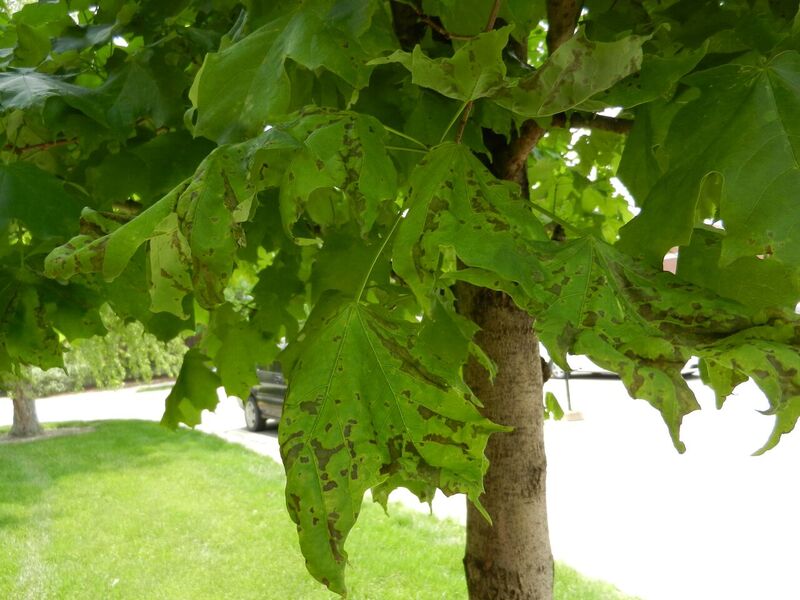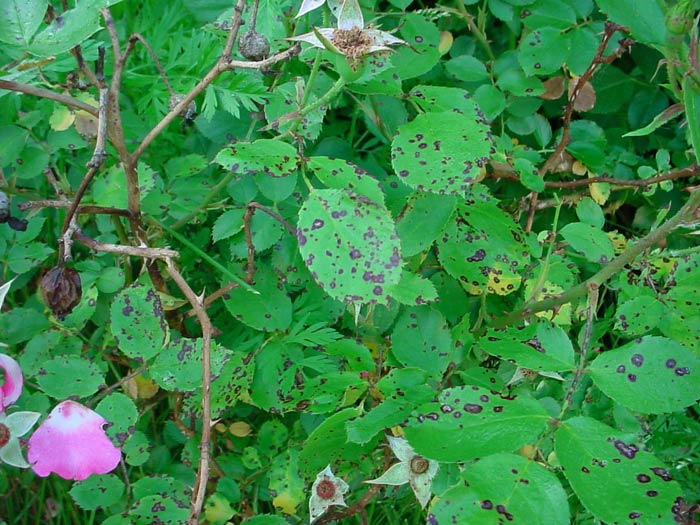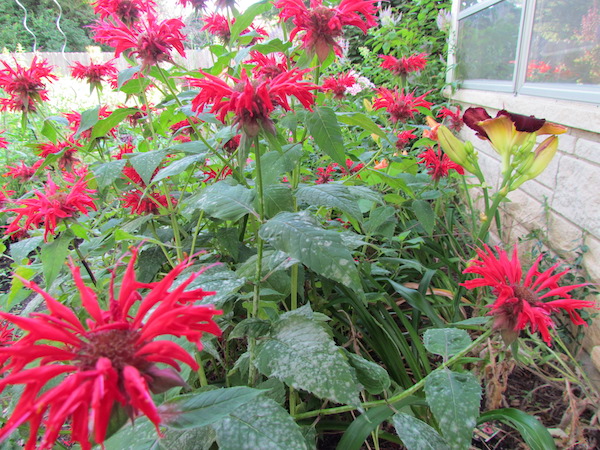
Anthracnose, a fungus disease, is common on maple trees and other landscape plants. Photo courtesy Purdue Plant and Pest Diagnostic Lab
The weather has been nothing, if not challenging. We all dodged raindrops in May and June trying to plant our veggies, pot up containers and other work in the garden, even mowing the grass.
All that rain resulted in lush growth, large plants and tender leaves. The sun came out and sunburned some of that new growth, which is nothing to worry about.
But the rain, heat and humidity did contribute to some worries in the garden, mostly plant disease brought on by various fungi.
Fungus diseases
“The fungus disease are starting,” said Rich Blankenship, president of Mark E. Holeman Inc.
Anthracnose is on dogwoods and some shade trees, he said. Septoria or powdery mildew is on perennials. Fortunately, “not all fungal disease means death of the plant.”
The company does some preventative treatments of trees, shrubs and other plants that are susceptible to certain fungal diseases, he said. “Sometimes you can ride it out, but if it was a bad year, you may want to consider preventative care next year.”
If certain plants, such as peonies and asters, usually get powdery mildew, it will likely be worse this year, Blankenship said.
Prevention
Preventative care includes spraying plants with an appropriate fungicide. The tricky part is treating at the correct time, he said. For instance, it could be when tree leaves start to unfurl or when flower buds break. Of course, rain and temperatures (too hot or too cold) also influence when a fungicide can be applied.

Septoria spots on rose leaves. Photo courtesy Purdue Plant and Pest Diagnostic Center
Tip: Fungicides are preventative, not curative. Plants with a fungus can be treated to protect leaves that have not been affected, but it’s usually not necessary.
- If perennials have been affected, consider spacing them farther apart or thinning out the planting. More air circulation is one way to combat fungus diseases.
- Avoid watering plants at night. Water in the morning, so leaves will dry during the day.
- When selecting plants, look for disease resistant varieties.
Be observant
When your Holeman professionals work in your landscape, they observe what’s going on and they will alert you if they see a problem, and offer suggestions on how to correct it.
Tip: A fungus disease that is on one plant, such as powdery mildew on peony, does not mean it will spread to other plants. Usually fungus diseases are plant specific.

Powdery mildew on bee balm (Mondarda). (C) Photo courtesy Jo Ellen Meyers Sharp
You, too, can keep an eye on the health of your plants. You’ll be the first to notice if leaves turn yellow or brown. Or, if a gray fuzzy substance (powdery mildew) coats leaves. Or, if spots show up on leaves. Look at the lawn, too, which with all the rain, heat and humidity, can develop disease problems.
Of course, if you have any questions about your landscape, please give Holeman a call.
